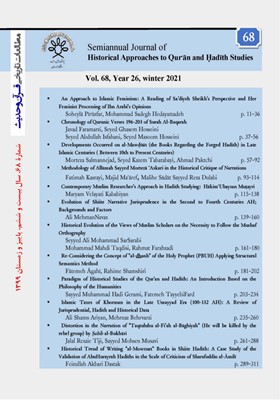Re-Considering the Concept of "al-dhanb" of the Holy Prophet (PBUH) Applying Structural Semantics Method
Subject Areas : -fatemeh agahi 1 * , Rahimah Shamshiri bebarkateh 2
1 - PhD graduate in Quranic and Hadith Sciences, Ferdowsi University of Mashhad, Mashhad, Iran (Corresponding Author).
2 - Assistant Professor, Department of Quran and Hadith, Kowsar University, Bojnurd, Iran.
Keywords: Covenant, Sin, Prophet Muhammad, Dhanb, Khati’ah, Structural Semantic, Paradigmatic and Syntagmatic Relations,
Abstract :
"Dhanb" is one of the key words in the semantic field of the concepts of sin in the Holy Qur'an, which in some cases has been attributed to divine prophets, including the Prophet Muhammad (PBUH). For a long time, there has been ambiguity among Muslim scholars about the relationship between sin and repentance both of which have been attributed to the Holy Prophet (PBUH) and how they should be explained, and despite many attempts, a precise result has not yet been provided. This article seeks to explain the meaning of the term 'Dhanb' attributed to the Holy Prophet (PBUH) with the method of structural semantics and examine the relations of Paradigmatic and Syntagmatic of sin in the verses and thus has tried to be the first step in the research of the concept of the sin of the Holy Prophet (PBUH) in the Holy Quran. This study shows that the concept of sin in the Qur'an is any disregard for the covenant with the superior. The sin attributed to the Holy Prophet (PBUH) is also related to the divine covenant with him in the field of mission and related duties, and often refers to cases such as haste in fulfilling divine promises in achieving victory and the punishment of infidels.
_||_

